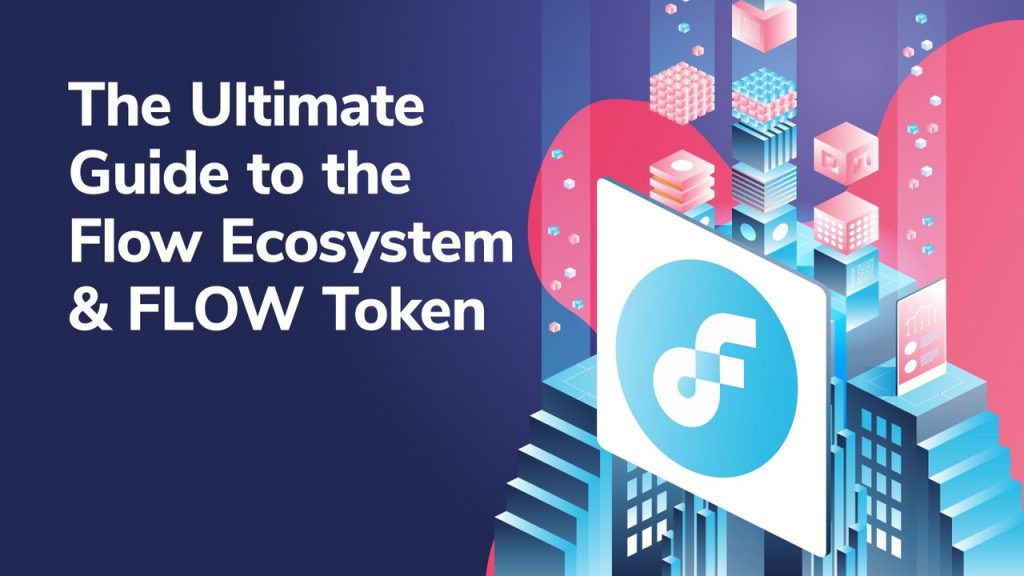
Developed by Dapper Labs, the team behind CryptoKitties, the Flow ecosystem is the home of popular audience engagement apps such as NBA Top Shot, and the official UFC collectibles series. The Flow blockchain comprises various unique elements. These include the Cadence programming language, the Specialized Proofs of Confidential Knowledge (SPoCKs) cryptographic technique, and the FLOW token. Many of you may be wondering “what is Flow?”, or “what makes the Flow blockchain so unique?”. That’s why we’ve created this ultimate guide to the Flow ecosystem and the FLOW token!
In this guide to the Flow ecosystem, we’re going to explore the various facets of the Flow blockchain and the applications built on top of it. Also, we’ll discuss the FLOW token and the role it plays within the Flow ecosystem. Furthermore, we’ll discuss some of the big names and brands that have partnered with Flow!
To interact with applications on the Flow blockchain, you will need to be familiar with using Web3 wallets. If you’re new to crypto, welcome to Ivan on Tech Academy! We have a vast array of courses to guide people in blockchain technology and cryptocurrency, regardless of experience.
Be sure to check out our Crypto Basics course for a guided tutorial on creating an exchange account, buying, trading, and safely storing crypto. Moreover, to familiarise yourself with the number one Web3 wallet, MetaMask, see our DeFi 101 course! Here you’ll learn how to set up and navigate MetaMask and interact with a variety of decentralized finance (DeFi) protocols. See the wide range of courses available today, at Ivan on Tech Academy!
What is the Flow Blockchain?
The Flow blockchain is “the blockchain for open worlds”. It was built as a developer-friendly platform to become the foundation of next-generation gaming applications and digital assets.
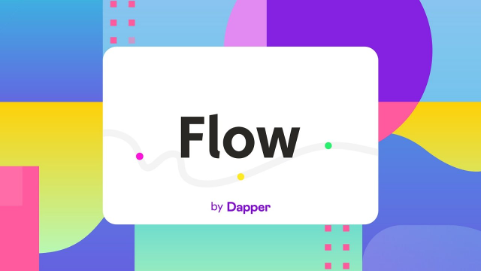
Flow’s multi-role architecture was created to scale without the need for sharding. This allows for higher throughput and faster gameplay while providing an environment that makes it easy for developers to build next-generation crypto platforms. Furthermore, this is achieved without compromising on security or safety.
Dapper Labs
Founded in Vancouver, Canada, in 2018, Dapper Labs Inc. is all about bringing “fun and games on the blockchain”! The mission of Dapper Labs is a very personable and community-based one. Dapper Labs want to create products with real meaning for real people. This is made possible by promoting value without compromise and offering people a seamless, interactive, and decentralized experience. Moreover, Dapper Labs has launched the decentralized application (dApp), Dapper. This dApp offers users a simple and secure way to access Flow and interact and transact using the dApps available across the Flow ecosystem. Dapper is considered the “trusted gateway to your digital goods”.
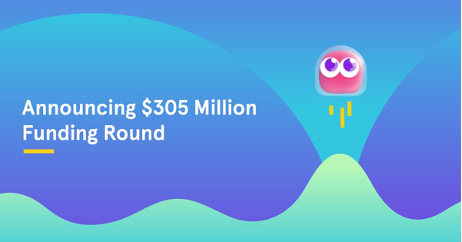
Often known for being the creators of CryptoKitties, the most popular blockchain-based non-fungible token (NFT) kitten breeding game to have existed, Dapper Labs has also launched some of the biggest NFT and decentralized gaming applications active today. These include NBA Top Shot, Cheese Wizards, and soon, UFC digital collectibles too.
NBA Top Shot
NBA Top Shot allows fans to own some of the top NBA highlights. The decentralized application (dApp) has gone from success to success, achieving the number one spot for the most-used dApp in the world, with over 3 million marketplace transactions thus far. NBA Top Shot allows fans to purchase ‘packs’ of NBA highlights as non-fungible tokens (NFTs), create collections, and join communities to trade their NBA Top Shot NFTs.
Dapper Labs boasts an impressive list of partners and investors including a16z, SV Angel, USV, and Venrock. One of the well-known backers of Coinbase, Andreessen Horowitz has stated his support and backing of Dapper Labs. In the three years of operation, Dapper Labs has seen several successful funding rounds. A few weeks following a successful round valued at $2.6 billion, Dapper Labs is set to raise another round with a suggested valuation of over $7.5 billion. The next round will be organized by Coatue Management, led by successful billionaire investor, Philippe Laffont.
Exploring the Flow Ecosystem
The Flow blockchain allows developers to build blockchain and crypto services in a way that allows for the creation of new digital assets, economies, and decentralized marketplaces. Flow is a smart contract-enabled blockchain that serves various industries and uses cases.
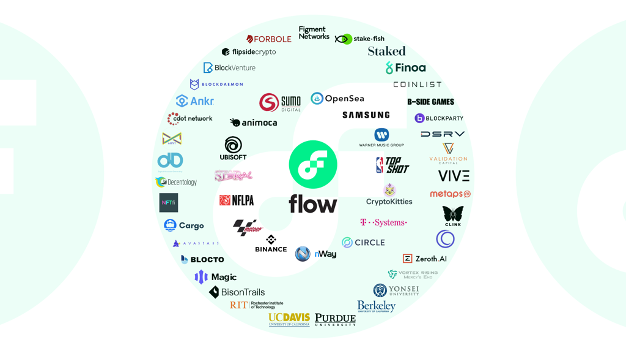
Furthermore, applications built on Flow allow users to maintain control of their data. Flow and Dapper Labs have created an environment that enables developers to create dynamic and engaging applications. The four pillars of Flow are what make it stand out from other blockchains. These are:
- Multi-Role Architecture: A unique, scalable blockchain infrastructure with a focus on decentralization without sharding.
- Resource-Oriented Programming: Using the Cadence programming language makes it safe and simple to create easily auditable crypto applications.
- Developer Ergonomics: Including easily upgradeable smart contracts and logging support.
- Consumer Onboarding: Created for mainstream adoption, the Flow blockchain enables frictionless onboarding of new users and simple fiat-crypto conversions.
These four pillars put the Flow ecosystem at the forefront of enterprise-scale blockchain-based services and applications. In turn, this is helping to promote the mass adoption of cryptocurrency sector-wide.
Do you have any idea for building decentralized applications (dApps) for the Flow blockchain? Are you interested in becoming a developer but have no experience? Ivan on Tech Academy can teach you everything you need to know to launch your very own dApp or get a job as a blockchain developer! See our Ethereum Smart Contract Programming 101 course to learn the basics of the Ethereum Solidity programming language.
Then, see our Ethereum Smart Contract Programming 201 course to discover how to design and deploy a decentralized exchange (DEX)! Alternatively, try our Ethereum dApp Programming course for an end-to-end guide on deploying Ethereum-based dApps. Check out the amazing range of blockchain programming courses available at Ivan on Tech Academy today!
Multi-Node Architecture
Whereas most traditional blockchains require each node in the network to store the full state, the Flow blockchain’s multi-node architecture uses pipelining to separate the job of a validator node into separate roles. These include collection, consensus, execution, and verification nodes. This significantly reduces wasted energy and effort while improving efficiency across the Flow ecosystem. Rather than trying to do every task required to maintain the network, these validators specialize in one specific area of validation.

Furthermore, Flow utilizes an innovative cryptographic technique known as Specialized Proofs of Confidential Knowledge (SPoCKs) to address what is known as “the verifiers’ dilemma”. This refers to a choice a node must make regarding the allocation of resources for mining and verifying, assessing the profitability of doing both simultaneously.
All smart contracts across the Flow ecosystem share a single state. This allows for greater composability and sharing of resources between developers. As such, applications built on the Flow blockchain have developed a rapidly expanding network effect for both users and developers, as Flow apps are easily interoperable.
Because Flow does not use sharding, interactions between smart contracts across the Flow ecosystem are achieved in a single “atomic, consistent, isolated, and durable (ACID) transaction”. This allows complex smart contracts to be executed that incorporate multiple transactions at the same time, without causing excess strain on the network.
Moreover, Flow’s multi-node architecture prevents bottlenecking by separating computational tasks from non-deterministic consensus tasks. This enables much greater throughput, enhancing the user experience of applications within the Flow ecosystem.
Cadence Programming Language
The Cadence programming language is “the first ergonomic, resource-oriented smart contract programming language”. It allows developers to easily share resources and create complex smart contract solutions that are secure and scalable. Also, Cadence provides all the tools developers need to get their enterprise-grade products to market quickly and efficiently. Moreover, this is achieved with minimal risk, as smart contracts created with Cadence are simple and inexpensive to audit.
FLOW Token
Every activity within the Flow ecosystem requires a small amount of FLOW tokens to pay for the computational power needed to process a transaction. Transaction fees on FLOW are minuscule when compared to gas fees on Ethereum (approximately 0.001 FLOW). Furthermore, the FLOW token is the native currency to the Flow blockchain and is used as currency throughout all applications created within the Flow ecosystem.
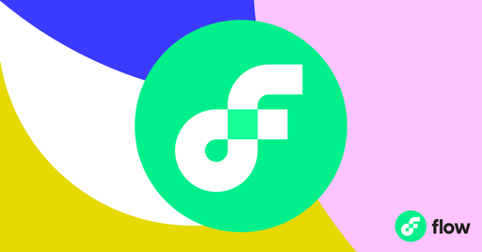
For developers, integrating FLOW tokens for peer-to-peer payment within smart contracts and applications built on the Flow blockchain couldn’t be easier. Moreover, FLOW token holders can play several key roles within the Flow ecosystem.
This includes validators, developers, and decentralized application (dApp) users. Also, the FLOW token is used for governance of the Flow blockchain to vote on proposals for protocol updates.
The Flow team believes a “healthy and sustainable distribution strategy” for the distribution of FLOW tokens is needed to maintain the growth of the Flow ecosystem in a decentralized and self-sustainable way. Additionally, FLOW tokens have low monetary inflation rates, with inflation of FLOW tokens decreasing as the network fees increase. As such, new FLOW tokens introduced into circulation are used to reward node participants within the network.
Staking FLOW Tokens
As a Proof-of-Stake blockchain, Flow requires users to stake their FLOW tokens to secure the network and complete transactions. In turn, users are then rewarded with FLOW tokens. The staking reward varies depending upon the role and demand for the node type. There are several roles a node can undertake when staking on the Flow blockchain (consensus, collection, execution, access, or verification).
To ensure that all roles remain incentivized and the ratio of node roles is balanced, the protocol automatically adjusts the rewards for different nodes to increase the payout. This incentivizes users to stake their FLOW tokens to a particular node role that has less activity than other roles, ensuring complete efficiency of the Flow ecosystem. Once the nodes have rebalanced, rewards will be adjusted accordingly. Also, FLOW token holders can stake their tokens across multiple nodes. However, the minimum stake must come from one single account. There is a minimum of 500,000 FLOW tokens to become a consensus node. FLOW token staking rewards are issued to holders every Tuesday at 13:00 EST.
For users interested in staking FLOW tokens, you will need an account with Flow Port. Flow Port facilitates FLOW token staking, delegation, and reward withdrawals. At present, the withdrawal is available only through Blocto and Ledger wallets/accounts.
FUSD
FUSD, Flow’s first official stablecoin was created by PrimeTrust. PrimeTrust is a reputable company offering plug-and-play APIs (application programming interfaces) and widgets for blockchain applications.
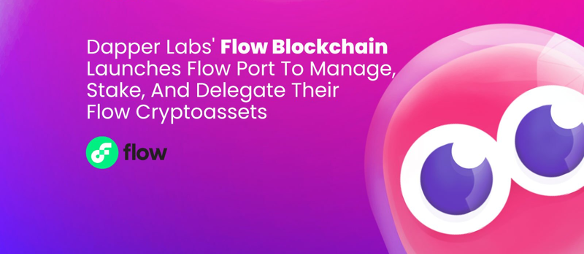
Flow recognizes the benefits and utility of stable or pegged assets for both developers and users alike. Using a stable-priced asset can be easier to manage and trade with as opposed to volatile assets. As such, the team behind Flow is happy to present a mock version of FUSD available on Flow Testnet for development purposes. Once FUSD launches on the mainnet, the stablecoin will also act as a medium of exchange. Additionally, FUSD can be an alternative payment for Flow network fees, if users don’t hold any FLOW tokens.
The Ultimate Guide to the Flow Ecosystem & the FLOW Token Summary
Flow blockchain enables brands, teams, and influencers to engage with fans and create unique experiences for audience engagement. Furthermore, Flow is gamifying these experiences by creating them in conjunction with verifiably scarce digital assets. Working alongside independent entities and globally recognized brands alike, Flow is lowering the barrier of entry for mainstream crypto adoption by providing a range of sophisticated products and services.

Moreover, Flow has raised the bar for smart contract-enabled blockchains and decentralized applications (dApps) in terms of composability and efficiency. In turn, this paves the way for a new wave of audience engagement opportunities and interactions between brands and consumers.
Does the Flow blockchain sound like something that could be of use to your business? See the Blockchain Business Masterclass course at Ivan on Tech Academy for a breakdown of integrating blockchain into centralized IT systems. Upon completion of the course, you should have sufficient knowledge to successfully run a blockchain-based project.
Furthermore, be sure to see our FinTech 101 course for a guide on regulations around finance and technology, and how the world’s two largest industries are merging. Ivan on Tech Academy is the largest online blockchain education suite with over 30,000 students enrolled. Join the community and start a life-changing career in crypto today! Also, don’t forget to follow us on Twitter @Academy_IOT! We’d love to know your thoughts about Flow after reading “The Ultimate Guide to the Flow Ecosystem & the FLOW Token”.





